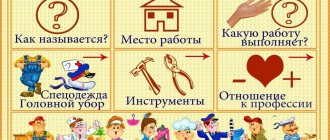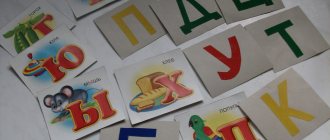Hands on hips
The aggressiveness of the interlocutor, his readiness to enter into direct conflict and showdown - this is how the language of gestures describes hands on hips. It is believed that such a pose, as it were, prepares the human body for a possible attack.
Hands behind your back
How can sign language explain the hands behind the back of a communicating person? It is believed that this pose, characteristic of members of the royal family, carries confidence and complete control over the situation, but this is only if the person stands with a straight back and head held high; otherwise, hands behind the back indicate humility and feeling of a hopeless situation.
Gestures are a way of communication
Gestures are such a common way of communication that they are understood all over the world. They are especially common among young people. It's time for everyone to know what young people are reporting by showing fingerprints.
The most positive sign is when the thumb is raised up. This gesture is understandable even to small children. It means complete approval of something. If he is also accompanied by a nod, then the person completely agrees with you. No other words are needed here.
Many hitchhikers use this simple but very welcoming gesture. Drivers usually stop their cars when they see such a sign.
But you need to know the country where you can show your thumb like this and where you can’t.
In Arab countries this means the male genital organ, and in Australia, Greece and Britain it is akin to a swear word.
In Spain, a thumbs up means support for the separatist movement, so no one will stop your car. You can also run into such ardent disapproval that it won’t seem enough.
If you see one thumb up on the Internet, on a YouTube channel, or on social networks, it’s a like, two thumbs up is a dislike, that is, complete disapproval.
Thumbs down means disapproval if someone doesn't like something. It is believed that this sign came to the world from Ancient Rome, from gladiator fights. By giving a thumbs down, the spectators demanded the death of the vanquished. Now they are not demanding death, they are simply showing that things at the moment are not as good as we would like.
The index finger is also of great importance in communication between people:
- Raised up - a person asks for attention.
- Pressed to the lips - please keep quiet.
- Rocking from side to side is prohibited.
- Vertical is a threat.
- Twist it at your temple - you show that the person doesn’t quite understand what he’s doing. But in Argentina and Peru this sign means that a person is focused and thinking.
Rubbing palms
With this gesture, a person communicates his positive expectations, for example, anticipating an interesting weekend trip or a successful deal at work. A man playing backgammon rubs a cube, expecting it to bring him good luck. If at the end of the evening a waiter comes up to a table in a cafe and rubs his palms, this means that he expects a good tip.
The speed of the gesture also matters. For example, if a buyer asks about something he needs, and the seller, quickly rubbing his palms together, says that he has just what he needs!”, he thereby signals that the transaction will be profitable for the buyer. If he slowly rubs his palms together, he may cause distrust of his words and suspicion of dishonesty. The buyer will involuntarily have the feeling that the purchase will not be beneficial for him, but rather for the seller.
The conventional gesture of “rubbing palms” should not be confused with the natural movements of a person trying to warm frozen hands on a frosty day.
What does the middle finger tell you?
If the middle finger is raised up, then all over the world it means an insult. A very rude gesture also came to us from ancient times, it is believed that from Ancient Rome.
But if the index finger is attached to the middle finger, then the sign takes on the positive meaning “everything is cool.” Young people often exchange such messages in nightclubs. The roots of the sign must be sought during the Hundred Years' War between England and France.
In those days, English archers who were captured had their index and middle fingers cut off so that they could no longer shoot a bow.
Then the archer warriors came up with a tease: before the battle they showed the French their healthy fingers, which meant “Be afraid, enemies!” To this day in English culture it means fuck you.
There is another explanation for the two fingers raised up. This is “Victory” (Peace). It is very similar to the letter of the Latin alphabet “V”. The word Victoria begins with this letter. The author of this gesture is considered to be the Prime Minister of England Winston Churchill.
It is important that the palm is turned towards the interlocutor, otherwise the meaning changes greatly: Russians will simply see the number two, and residents of Britain and Australia will be offended.
Slap on the throat
This gesture from the Russian drinking tradition articulated the phraseological phrase “pawn for the tie”, widespread in the 19th and early 20th centuries. This expression was born among officers, and it was invented by a certain Colonel Raevsky, “a talker and a buffoon.” By the way, he “invented” another “drinking” phrase - a little podshefe (chauff?). Interestingly, this gesture was adopted by speculators of strong drinks during the Prohibition Law, which Nicholas II established in the Russian Empire in 1914.
What does fig mean?
“Kukish”, fig, dulya, shish - all this refers to a well-known meaning - you will not get anything. In this case, three fingers are involved: the thumb is inserted between the index and middle fingers. In Rus', such a symbol was used to scare away evil spirits. And even today, when meeting with ill-wishers, many keep a fig in their pocket.
But a long time ago in Rus' this “construction” meant sexual intercourse. It's a different matter in Brazil. The gesture is considered a talisman that attracts good luck by protecting against the black eye.
If you see a fig in Japan and Thailand, you can interpret it this way: you are being offered an extensive list of sexual services.
Tearing the shirt on the chest
0
It was probably originally an impromptu oath. There is a hypothesis that with such an expressive gesture our ancestors showed their belonging to the Orthodox faith, showing a cross. In addition, it is known that during executions and some corporal punishments, the executors tore the top of the shirt of the punished person. So, the voluntary tearing of clothes as a persuasive argument was intended to show a person’s readiness to climb to the chopping block for the truth.
What does "Goat" mean?
In Rus', small children were entertained by putting their index finger and little finger forward. But this design also had another purpose: to cleanse children of negativity. At the same time, the children were read a nursery rhyme: “There comes a horned goat.” Today, adults make children laugh in the same way, without even knowing that “horns” cleanse children of negativity that comes from other people and the evil eye.
During the Middle Ages and among Europeans, this sign was very popular. It was believed to protect against magical powers and other negative energies. In Asian culture, the “goat” is also considered protection against dark forces.
In addition, Hindus use several variants of “horns”, which relate to ritual gestures - mudras. These signs are considered one of the most ancient and are used in meditation, as well as in other rituals.
Fans of metal rock and followers of the occult consider this gesture to be their invention. Heavy metal fans with such a gesture expressed their approval of the singer, as well as unity with everyone present at the concert. Ronnie Dio was the first to make this combination. Other singers, such as John Simmons, also used the rocker gesture.
In the nineties, new Russians who had become rich did the “fingering” in this way, giving a sign that no one would approach them.
For many, it will be a big surprise to learn that “goat” was used in ancient times, and is now used in Christian culture. It can even be seen on icons, where the gesture signifies the transmission of the good news. Its other meaning is a kind of direct speech for the connection between God and the saint who is depicted on the canvas.
But not all countries have such a positive attitude towards horns. In Italy you don't joke about this. There they are treated as the most serious insults and are perceived as a symbol of cuckolding. Residents of Western Europe will also be offended by this sign. But athletes are not offended, often using this particular symbol.
"Glove"
This gesture is essentially a handshake, in which a person clasps the outstretched hand of the interlocutor with both hands, like a glove. With this gesture, a person seems to be trying to emphasize his honesty, making it clear that he can be trusted.
The “glove” gesture is characteristic mainly of political figures. He's too ostentatious. If such a gesture is used during acquaintance, it can produce the opposite effect of the expected one. A new acquaintance will begin to treat the interlocutor with suspicion and will show more caution. Therefore, the “glove” gesture should only be used in relation to well-known people.
Symbols of modernity
The “Shaka” gesture is two fingers sticking out: the little finger and the thumb, and also attached to the ear. This combination means a request to make a phone call and, in general, everything related to telephone conversations.
If the little finger touches the lips, then it is suggested to drink or smoke “weed”. This is a common greeting on the Hawaiian Islands. Athletes also often resort to this symbol.
Today you can often see young people or singers or artists showing the “Heart” gesture. It was invented by stars from Korea, thus expressing their love for the audience.
“Castle” means that a person wants to be alone, that is, to isolate himself from people for a while. Perhaps a person wants to focus on something important, to think about something in solitude. He may also cross his arms over his chest, indicating that he does not want to communicate at the moment.
If a person wants to pull himself together, he involuntarily makes a “lock” with his fingers. He can even listen to the interlocutor, but at the same time focus on his own.
The “Okay” gesture, when the thumb and index finger are connected, shows that this person is doing well now. Just don't show this gesture in Turkey. In this country it will be perceived as an insult, since it means that you have the wrong orientation.
Love on the fingers also looks like a goat. Just put your thumb to the side. Three fingers represent three words: “I Love You.” It was invented by deaf and mute schoolchildren to express their feelings.
Unbuttoning a jacket
If you observe carefully, you will notice that people who are open and friendly towards their interlocutor often unbutton and even take off their jacket during communication. The experience of business communication shows that agreement between interlocutors in unbuttoned jackets is achieved more often than between those who remained at a business meeting in buttoned jackets. The unbuttoning of the jacket automatically occurs for the one who changes his decision in a favorable direction. At the same time, he also unclenches his hands.
Very often, after it becomes clear that during the negotiations an agreement or a favorable decision on the issue under discussion is possible, or a positive impression of working together is simply created, the partners sitting opposite unbutton their jackets, straighten their legs and move to the edge of the chair, closer to the table that separates them.
What about the deaf and dumb?
Many gestures unconsciously used in communication are reflected in the alphabet for the deaf and dumb.
Sign languages of the deaf are independent languages that consist of combinations of movements of the hands and fingers in combination with facial expressions, position of the mouth, lips and body.
It is a mistake to believe that sign languages for the deaf were invented by hearing people to convey information to those who cannot hear. In fact, these languages develop completely independently.
Moreover, in one country there may be several sign languages that do not grammatically coincide with the verbal languages of that country.
As practice shows, in the absence of the opportunity to use sound language as a means of communication, people instinctively begin to use gestures for this. The main means of communication for this are the hands and fingers.
At the same time, deaf people have many gestures, the meaning of which can be understood by an unprepared person. For example, the word “peace” in the language of the deaf and dumb will look like hands squeezing each other, located in front of the chest, “love” is a palm raised to the lips in the form of an air kiss, and “house” is palms folded in a triangle in the form of a gable roof.
Relevant Kaomoji
Kaomoji
very popular in Japan. Japanese grammatical punctuation marks and symbols are used to demonstrate emotions and actions. For example: (・ω´-ゞ)^☆! Use similar creativity in instant messengers and on the Internet to impress your friends.
Click/click to copy
- (・ω´-ゞ)^☆
- (;・ε・)ゝ”
- (。・ω・。)ゞ
- (〃´3′〃)ゞ
- *~ヽ(ゝз・☆)
- \(^-^)/
- ヽ( ˘ω˘ )ゝ
- ヽ( ˘з˘ )ゝ
- ヾ|*゚ω゚|ゞ
- c(>ω<)ゞ
- +Add
Skin colors for ✌ Hand with peace gesture
Click/click to copy
- ✌






